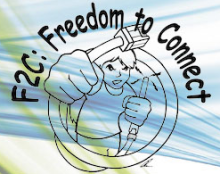FCC Opens Spectrum; Creates Citizens Broadband Radio Service
On April 17th, FCC Commissioners voted unanimously to expand the use of spectrum previously reserved for U.S. Army and Navy radar systems. The FCC Report and Order creates the Citizens Broadband Radio Service (CBRS) which establishes rules for shared use by licensed and unlicensed users.
This is a step forward to ensuring we are getting the most use out of the spectrum - by allowing different entities to share the spectrum when it is not being used in some geographic areas for the purpose it was originally allocated for. Milo Medin of Google explained this plan at Freedom to Connect - watch his presentation here.
According to the FCC Press Release [PDF], sharing will be managed with a three-tiered approach:
In addition to the protected incumbent tier, the Report and Order authorizes two commercial tiers of use in the Citizens Broadband Radio Service. The General Authorized Access tier, which allows any user with a certified device to operate without seeking any further Commission approval, will permit low-cost entry into the band, similar to unlicensed uses. A Priority Access tier will make geographically targeted, short-term priority rights to a portion of the band available through future spectrum auctions. One or more Spectrum Access Systems, operated by private commercial entities, will facilitate coexistence among the different user tiers.
Public Knowledge applauded the decision. Senior Vice President Harold Feld:
Today’s FCC’s actions lay the groundwork for changes in the very way we use wireless, allowing different levels of interference protection and network architecture that will make the wireless world of the future as radically different as the smartphone and the WiFi hotspot are from touchtone phones and the CB radios.
New America's Michael Calabrese, Director of New America's Wireless Future Project commended the FCC and pushed for more action:


